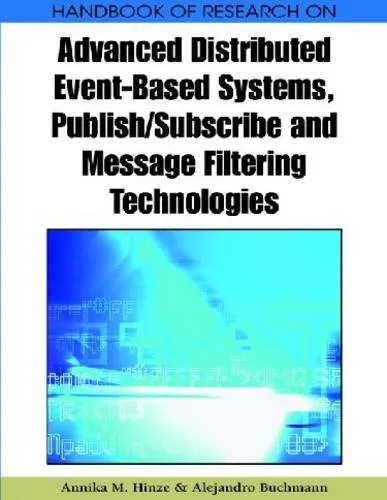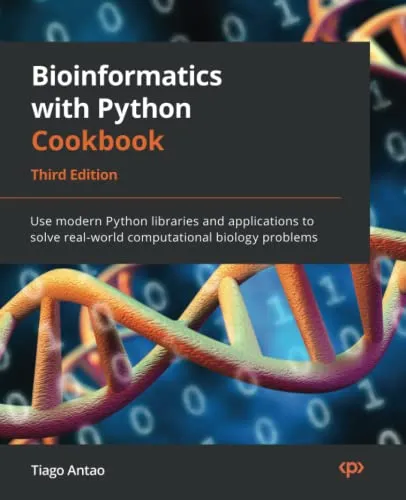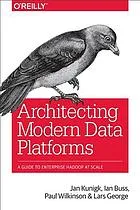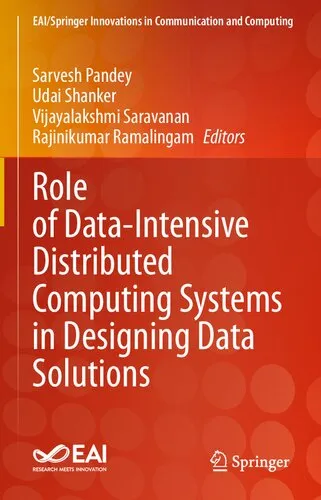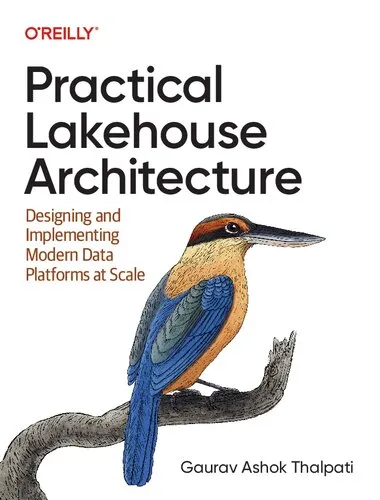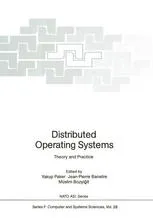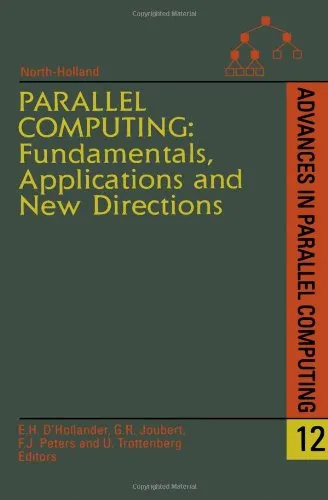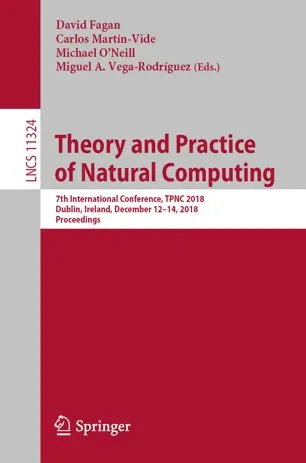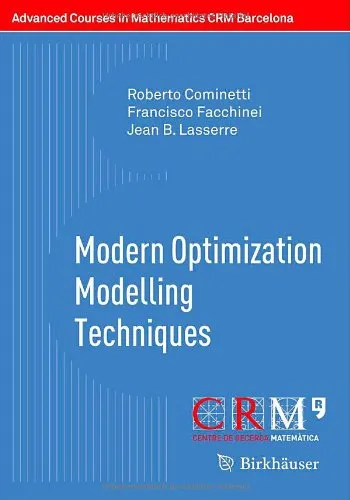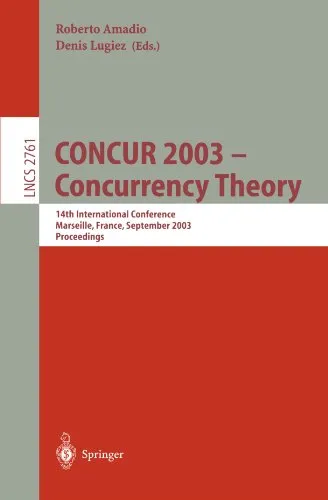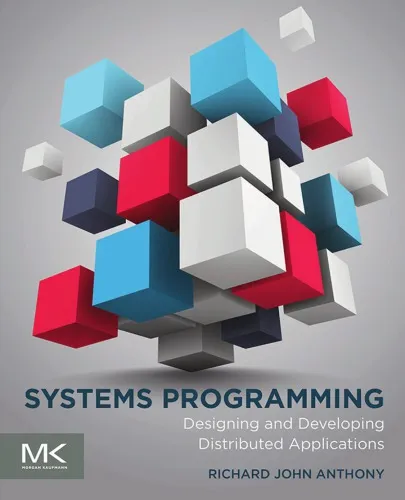Principles and Applications of Distributed Event-Based Systems
4.0
بر اساس نظر کاربران

شما میتونید سوالاتتون در باره کتاب رو از هوش مصنوعیش بعد از ورود بپرسید
هر دانلود یا پرسش از هوش مصنوعی 2 امتیاز لازم دارد، برای بدست آوردن امتیاز رایگان، به صفحه ی راهنمای امتیازات سر بزنید و یک سری کار ارزشمند انجام بدینکتاب های مرتبط:
معرفی کتاب
کتاب "Principles and Applications of Distributed Event-Based Systems" نوشته آنیکا ام. هینزه یکی از منابع معتبر و جامعی است که به بررسی عمیق مفاهیم، اصول، و کاربردهای سیستمهای توزیعشده مبتنی بر Event میپردازد. این سیستمها به عنوان یکی از تکنولوژیهای اصلی در پردازش دادههای زمان واقعی و مدیریت رویدادها نقش کلیدی ایفا میکنند. کتاب حاضر با نگاهی تخصصی و در عین حال قابل فهم برای طیف گستردهای از خوانندگان، به معرفی مبانی، چالشها، و آینده این فناوری میپردازد.
خلاصهای جامع از کتاب
در این کتاب، نویسنده به تشریح نحوه طراحی، پیادهسازی و بهینهسازی سیستمهای Distributed Event-Based Systems پرداخته است. این سیستمها که بر پایه الگوهای Pub/Sub (Publish/Subscribe) و Event Processing طراحی میشوند، به سازمانها امکان میدهند تا با سرعت بالایی به تغییرات محیطی پاسخ دهند. از اصلیترین بخشهای این کتاب، میتوان به توضیح اصول اولیه Event Notification، معماری سیستمهای توزیعشده، مدیریت Event Streams، و الگوریتمهای مرتبط اشاره کرد.
در فصلهای مختلف، موضوعاتی نظیر Stream Processing، Middleware در معماری توزیعشده، و پروتکلهای Event Propagation مورد بررسی قرار میگیرند. همچنین، بخشهای پایانی کتاب به کاربردهای عملی این سیستمها در زمینههایی مانند IoT، شهرهای هوشمند، سیستمهای مالی و بهداشتی اختصاص داده شده است.
این خلاصه تنها نمایانگر بخش کوچکی از عمق محتوای علمی و عملی این کتاب است که برای دانشجویان، محققین، و مهندسان کامپیوتر بسیار ارزشمند خواهد بود.
نکات کلیدی کتاب
- مفهوم Event-Based Systems و کاربردهای آن در زمینههای مختلف.
- اهمیت معماری توزیعشده در طراحی سیستمهای مقیاسپذیر.
- روشهای مختلف مدیریت Event Streams و بهینهسازی آنها.
- معرفی الگوهای طراحی (Design Patterns) برای سیستمهای مبتنی بر Event.
- بررسی چالشهای امنیتی در محیطهای توزیعشده.
نقلقولهای معروف از کتاب
“The versatility and power of Distributed Event-Based Systems stem from their ability to decouple components, process events at scale, and enable rapid responsiveness in dynamic environments.”
“Event-driven architectures play a pivotal role in enabling real-time data processing and decision making for modern applications.”
چرا این کتاب مهم است؟
کتاب "Principles and Applications of Distributed Event-Based Systems" به دلیل پوشش جامع موضوعات تخصصی و ارائه مثالهای کاربردی، نقشی حیاتی در درک عمیقتر فناوریهای پیشرفته دنیای امروز ایفا میکند. در دنیای مدرن، جایی که جمعآوری و پردازش سریع دادهها یکی از مهمترین چالشها است، نیاز به سیستمهایی که امکان مدیریت مقیاسپذیر دادهها را فراهم میکنند بیش از پیش احساس میشود. این کتاب به ارائه راهحلهای علمی و عملی در این زمینه پرداخته و مخاطب را قادر میسازد تا راهکارهای موثری برای پروژههای خود طراحی و پیادهسازی کند.
همچنین، این اثر برای متخصصان فناوری اطلاعات، دانشجویان فوق لیسانس و دکتری، و حتی مدیران پروژههایی که میخواهند سیستمهای قدرتمند و مقیاسپذیر طراحی کنند، یک منبع کلیدی و ضروری محسوب میشود.
Introduction to "Principles and Applications of Distributed Event-Based Systems"
The field of distributed event-based systems (DEBS) has grown significantly over the last few decades, becoming a cornerstone of modern computing systems. My book, "Principles and Applications of Distributed Event-Based Systems", provides a comprehensive overview of this transformative domain, blending theoretical underpinnings with practical applications. This text aims to cater to both academic researchers and industry professionals by offering a clear understanding of the concepts, principles, and real-world implications driving event-based systems.
At its core, this book addresses the dynamic and real-time nature of event-based systems, making it an indispensable guide for designing systems that require swift responses to events across distributed environments. As these systems power domains like IoT, financial systems, and large-scale monitoring platforms, the insights provided in this book could not be more timely or relevant.
Detailed Summary of the Book
Distributed event-based systems enable asynchronous communication between loosely coupled components, making them ideal for applications that demand high scalability, reliability, and real-time processing. The book is divided into several key sections that build a foundational understanding and delve into advanced applications:
The initial chapters introduce fundamental concepts, such as the nature and flow of events, system architectures, and event-based communication paradigms. These concepts set the stage for a deeper exploration of core topics like event dissemination, subscription models, and quality of service (QoS) requirements.
A significant portion of the book is dedicated to middleware, emphasizing the role of brokers and publish-subscribe models in enabling seamless communication. It also covers design patterns to optimize system behavior across distributed environments and demonstrates how real-world systems solve challenges like event ordering, fault tolerance, and state consistency.
Finally, the use of distributed event-based systems in emerging domains—such as Internet of Things (IoT), smart cities, and cloud computing—is explored with real-world case studies. This highlights the versatility and practical relevance of the technology while offering actionable insights into systems development.
Key Takeaways
- Understand the principles of event-based systems at a fundamental and advanced level.
- Learn about middleware and system design for high-performance distributed systems.
- Explore real-world applications and systems to understand how theory is applied in practice.
- Discover design patterns and best practices to improve scalability, fault tolerance, and reliability.
- Gain insight into emerging trends in IoT, cloud computing, and data-driven systems.
Famous Quotes from the Book
"In a world where computation is distributed and events stream in real-time, success is defined not just by speed but by graceful and reliable interactions."
"While events are transient by nature, the systems that manage them must achieve enduring impact, operating reliably amid failures and scaling to meet the needs of ever-changing workloads."
"The true beauty of distributed event-based systems lies in their ability to transform chaos into clarity, by distilling the noise of events into actionable insights."
Why This Book Matters
As distributed systems continue to evolve, understanding how to build and manage event-driven architectures has become a critical skill set for both developers and system architects. The book "Principles and Applications of Distributed Event-Based Systems" matters because it addresses this gap comprehensively and systematically.
It brings together technical rigor and practical relevance, offering readers an accessible yet profoundly impactful resource. By exploring the confluence of system design, middleware innovation, and real-world applications, this text equips readers to tackle the complex challenges of distributed computing. Moreover, as the demand for real-time systems expands across industries, the principles outlined in the book offer a sustainable and future-proof approach to designing robust systems.
Whether you're a researcher seeking to contribute to the advancement of distributed systems or a professional looking to design scalable, event-driven platforms, this book provides the knowledge and tools to achieve your goals.
دانلود رایگان مستقیم
شما میتونید سوالاتتون در باره کتاب رو از هوش مصنوعیش بعد از ورود بپرسید
دسترسی به کتابها از طریق پلتفرمهای قانونی و کتابخانههای عمومی نه تنها از حقوق نویسندگان و ناشران حمایت میکند، بلکه به پایداری فرهنگ کتابخوانی نیز کمک میرساند. پیش از دانلود، لحظهای به بررسی این گزینهها فکر کنید.
این کتاب رو در پلتفرم های دیگه ببینید
WorldCat به شما کمک میکنه تا کتاب ها رو در کتابخانه های سراسر دنیا پیدا کنید
امتیازها، نظرات تخصصی و صحبت ها درباره کتاب را در Goodreads ببینید
کتابهای کمیاب یا دست دوم را در AbeBooks پیدا کنید و بخرید
1352
بازدید4.0
امتیاز0
نظر98%
رضایتنظرات:
4.0
بر اساس 0 نظر کاربران
Questions & Answers
Ask questions about this book or help others by answering
No questions yet. Be the first to ask!
